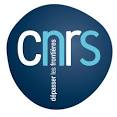ISPR is part of Institut Pascal: a joint laboratory from Clermont Auvergne University, CNRS and Sigma.
It is composed by four teams:
ComSee: for COMputers that SEE – is a Computer Vision research team of the Image, Systems of Perception and Robotics (ISPR) department of the Pascal Institute.
ComSee research activities mainly focus on two axes:
3D vision and geometry: vision sensor modeling and calibration (including standard, rolling-shutter, and plenoptic cameras), 3D localisation and 3D reconstruction
Image sequences analysis: detection, recognition and tracking in dynamic complex scenarios and sometimes degraded conditions is still a challenge. Learning and transfer learning techniques are proposed to deal with these issues.
DREAM: for Dream is Research on Embedded Architecture and Multisensor – is a collaborative research team at Insitut Pascal. This team focuses on cutting edge research in architectural modeling and analysis, language- based approaches for embedded systems, smart cameras, middleware and multi-core technology. The group expertise spans from design concepts to various implementation technologies for building realistic working prototypes in application domains such as image processing computer vision
MACCS: stands for Modeling, Autonomy and Control in Complex Systems. It is a research team of Institut Pascal (UMR6602 CNRS / UBP / IFMA), a joint research unit of CNRS (Centre National de la Recheche Scientifique), UBP (Université Blaise Pascal), and IFMA (Institut Français de Mécanique Avancée). Our research mainly deals with modeling and control of mobile robots and manipulators, robot vision, active vision, visual servoing, anticipatory behaviors. The applications of our research are related to robotic-based manufacturing and intelligent transportation systems
PerSyst: (« Perception System ») is a part of Pascal Institute (UMR6602 CNRS / UBP / IFMA), a joint research unit of CNRS (French national research council), UBP (Blaise Pascal University), and IFMA (French institute of mechanics).
The main issues addressed in persyst are :
– multisensor localisation and fusion. This work is dedicated to new localisation approaches taking into account both sensors modeling, multi-modalities SLAM (lidar, vision, radar,…), optimal filtering,…
– multi-robots collaboration. We propose here new approaches for uncentralized localisation and multi-robots / multi-sensors SLAM for mobile robotics and platooning.
– scene mapping, modeling and understanding. Building automatically new 3D maps is nowadays a challenge that can lead to a better understanding of the dynamic scenes. We propose here new approaches dedicated to these challenges combining mapping, modeling for outdoor scenes interpretations.





